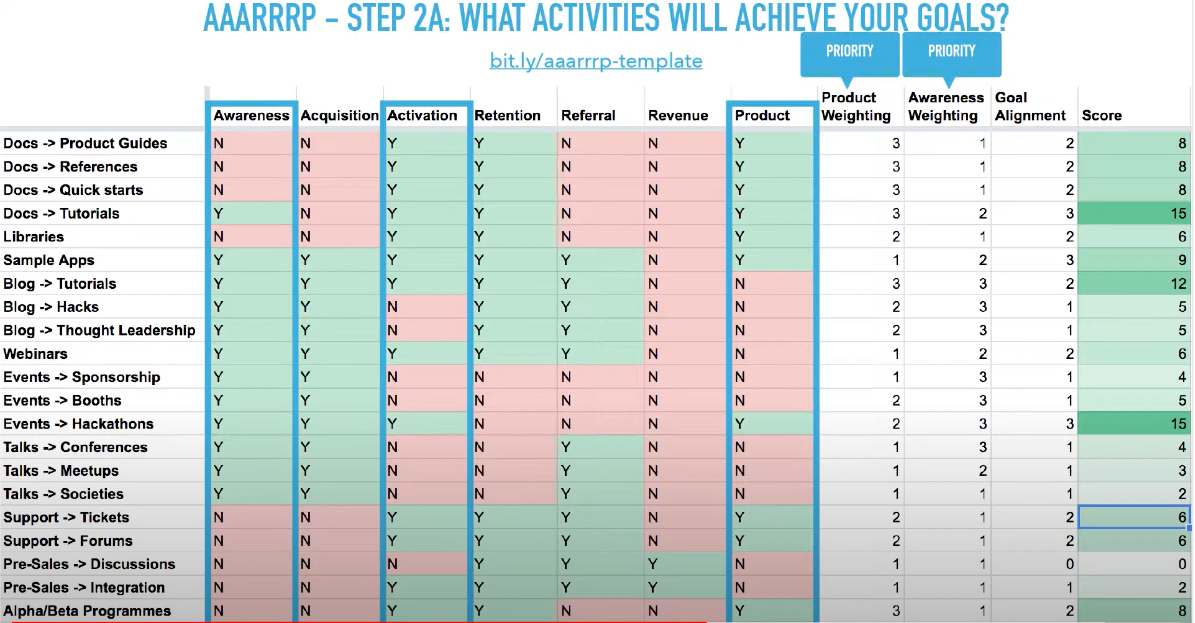The AAARRRP DevRel framework with Phil Leggetter

I enjoyed this talk, where Phil Leggetter shares a framework for a DevRel funnel.
Below are some summarised notes of what I took from this talk.
Base funnel
- Acquisition - signs up
- Activation - using your product, e.g. first API call
- Retention - continues to use product
- Referral - refers others
- Revenue - pays
With a couple of additions for DevRel
In Phil's mind, this was a great starting point but missing a few things for DevRel.
- Awareness - do they know we exist?
- Product - feeding back into the product
Putting it together - the AAARRRP funnel
- Awareness - do they know we exist?
- Acquisition - signs up
- Activation - using your product e.g. first API call
- Retention - continues to use product
- Referral - refers others
- Revenue - pays
- Product - feeding back into the product
How to use AAARRRP
1) Define your goals.
This means focusing on some (but not all) of the seven goals mentioned above e.g. Nexmo were focused on Awareness, Activation and Product.
2) Define activities to meet your goals
Phil lays out the following method
a) What activities will achieve your goals?
You can use Phil's handy spreadsheet to look at which activities will help you meet your goals.

Since Nexmo were focused on Awareness, Activation and Product, they assigned weighting for each possible activity to each goal.
For example. "Making Samples Apps" has a product weighing of 1/3 and an awareness weighting of 2/3

Note: Nexmo didn't have an Activation column because "their focus on the product is Developer Experience which leads to activation".
b) Can you find activities that meet more than one goal?
Some activities achieve multiple goals. For instance, running hackathons achieves awareness, activation and product feedback.
To account for this, Nexmo has a goal alignment column, which is how many of the three goals it hits. You can see that Hackathons meets all three goals with a score of 3/3.
Nexmo then multiply the goal alignment by the sum of the weightings to get a final score for each activity.
For hackathons, this is:
( Product weighting (2) + Awareness weighting (3) ) x Goal Alignment (3) = 15
c) Can you find complimentary activities?
Doing some things can make it easier to do other things. So looking for complimentary activities is a nice time saver.

Step 3 - plan to execute
The final step is to focus on planning to execute the activities you've selected to focus on.
A lot of it seems to be company dependent from here, and Phil advises being guided by your team values, and constraints and focusing on well-being (avoiding burnout).
Conclusion
I enjoyed this talk a lot.
DevRel can feel overwhelming - especially at early-stage companies.
The systematic approach of reviewing all possible activities is a useful tool for narrowing down where you should be spending your time.
